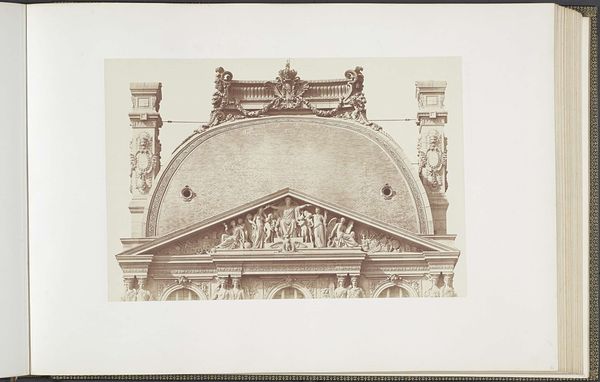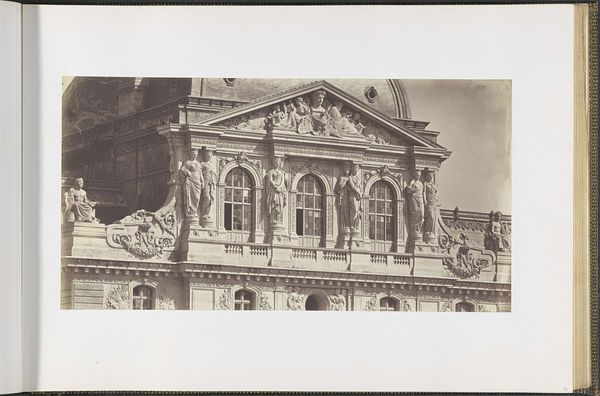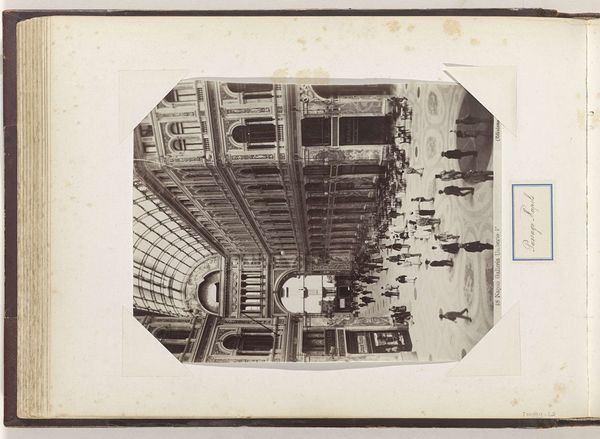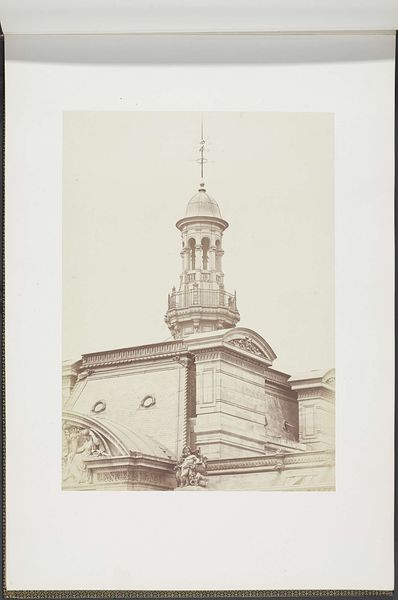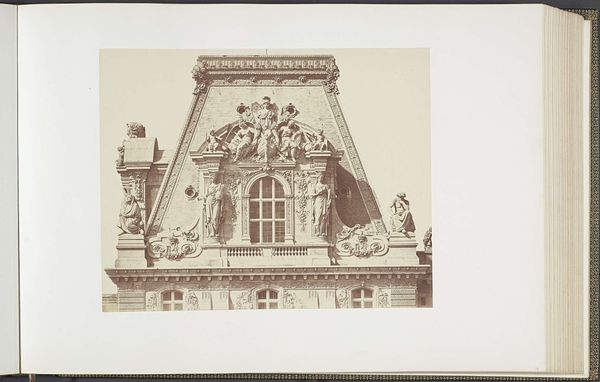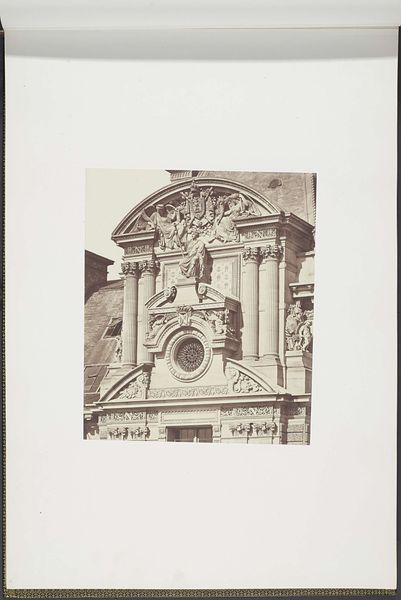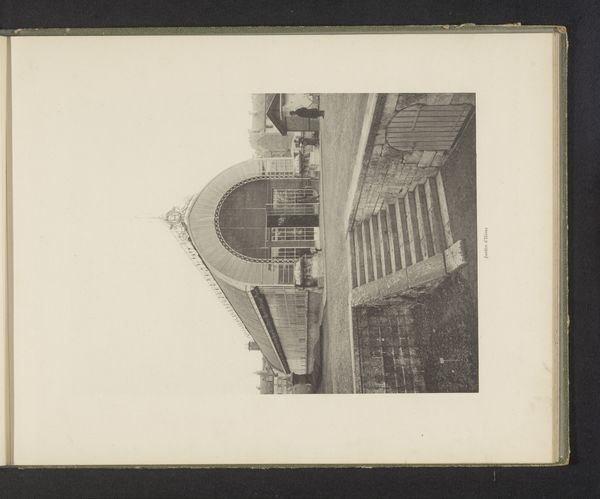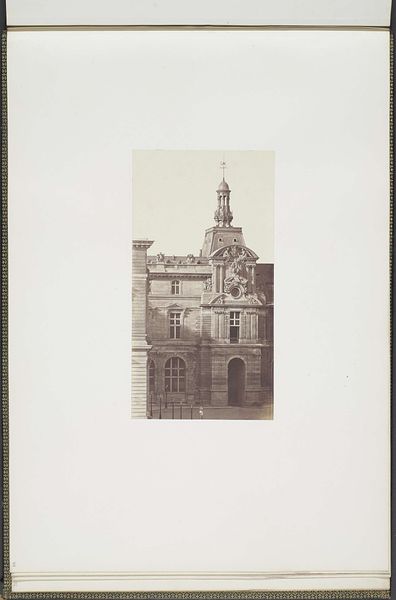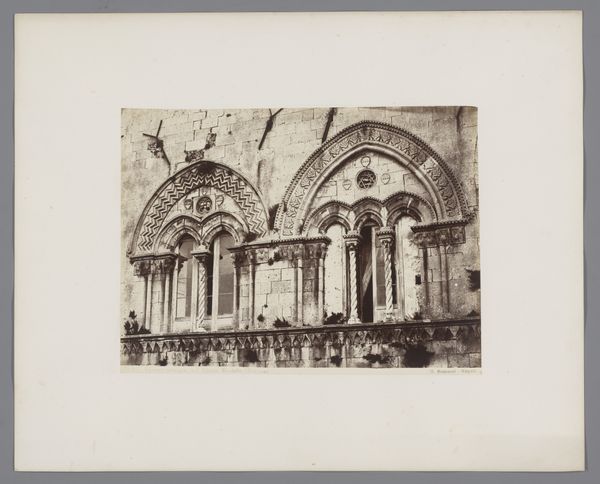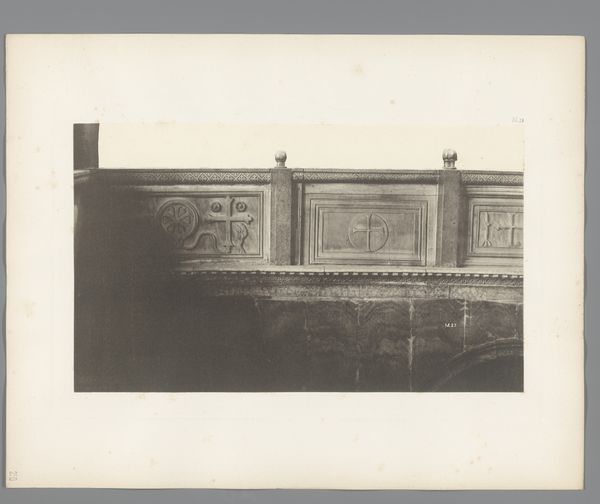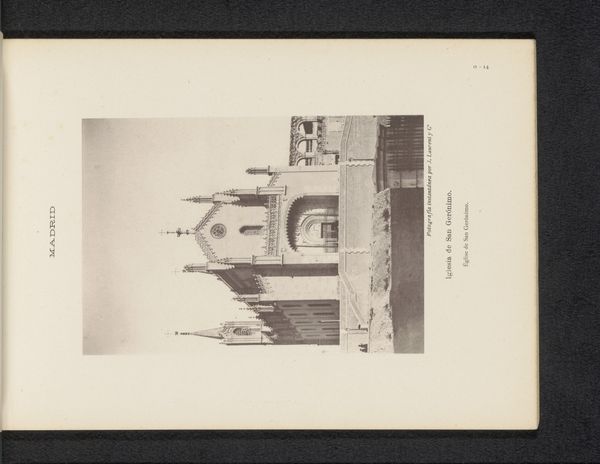
Dak en fronton van het Pavillon Sully in het Palais du Louvre c. 1857
0:00
0:00
print, photography, architecture
#
neoclacissism
# print
#
landscape
#
photography
#
architecture
#
building
Dimensions: height 382 mm, width 560 mm
Copyright: Rijks Museum: Open Domain
This photograph by Edouard Baldus captures the roof and pediment of the Pavillon Sully in the Palais du Louvre. The allegorical figures adorning the pediment are particularly evocative. These figures, frozen in stone, are descendants of classical antiquity, reborn in 19th-century Paris. We see echoes of Greek and Roman deities, symbols of power, wisdom, and artistic inspiration. Note the recurring motif of the acanthus leaves; these ripple across the facade like echoes of ancient temples. The pediment’s triangular form itself is a potent symbol, a visual language passed down through centuries, from the Parthenon to the Renaissance. It represents stability, order, and the aspiration towards higher ideals. Such motifs resurface, transformed, yet still tethered to their origins. They tap into a collective memory, stirring something deep within us, a recognition of our shared cultural past. These aren't mere decorations, they're conduits to understanding how symbols evolve, adapt, and continue to resonate through time.
Comments
No comments
Be the first to comment and join the conversation on the ultimate creative platform.
